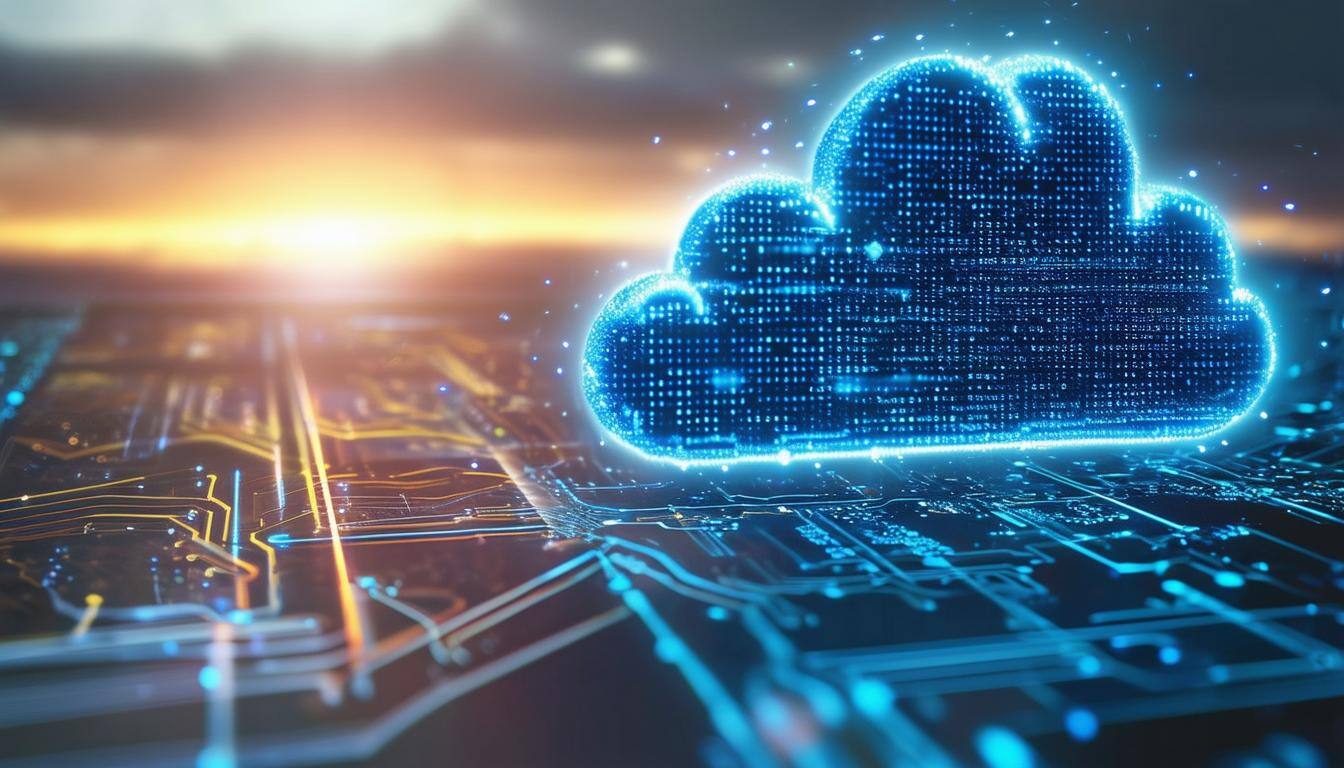And How You Can Implement It in Your Operations, Securely
When you take technology out of office and into the field, things get really interesting. Connectivity challenges grow and variables like weather and remote locations have an outsized impact. But from an offshore oil rig to field services, customer expectations remain high. High degrees of accuracy along with uptime are of the utmost importance, as any interruptions or extended downtime mean significant losses—both in revenue and in customer satisfaction.
In the face of these challenging variables, organizations that strategically embrace new technologies and tools, and successfully navigate a digital transformation, can give themselves a critical edge in the competition. Enter: the Internet of Things (IoT). A recent study published by Statista found that 57% of North American and European companies are either already using IoT or plan to implement IoT in their operations in 2023.
And it’s easy to see why: the IoT arms organizations with a tremendous wealth of data that is then processed so it’s actionable in real-time, allowing for agile and informed decision-making. For field services and utilities, it can also empower remote monitoring and operating, improve safety, accuracy in problem decoding, and enable preventative maintenance. There’s almost limitless opportunity for the IoT to improve efficiencies, revenue, safety, and customer relationships.
But like many technologies, it’s not as easy to implement. There are risks and challenges that come with all that data and connectivity.
A Brief Introduction to IoT for Field Services, Energy, and Utilities
The Internet of Things (IoT) refers to physical devices that can now be connected to data networks via the internet and made intelligent thanks to embedded sensors and computing abilities so they can communicate real-time data—without human intervention. And while the IoT has been 40 years in the making, we are officially in the age of connected devices: we are on our way to 75.44 billion installed IoT devices worldwide by the end of 2023, having surpassed the number of people worldwide back in 2008.
IoT devices communicate with themselves, IoT applications, and platforms, creating a sophisticated ecosystem. An IoT system both acquires data in real-time and enables the two-way transfer of data, allowing for real-time analysis and control of the system as well as predictive and preventative action.
The three main components of an IoT solution, as defined by Gartner, are:
-
The Edge: The Edge is comprised of the physical devices themselves. This is where data is acquired through sampling and collection from the surroundings, by connected devices that contain sensors and/or configurable parts to alter the operation of the device.
-
The IoT Platform: The platform consumes, stores, and analyzes the data. Based on the intelligence learned from the analysis, the platform will invoke tasks or enterprise applications. The platform also consists of device and system manageability. Examples of IoT Platforms include Microsoft Azure IoT, IBM Watson, and Google Cloud IoT.
-
The Enterprise: This represents the set of applications, processes, and services that can be called by the IoT Platform to complete business outcomes.
We’d also add Connectivity to this list as a main component, since crucial to the Internet of Things is the ability of these devices to connect so they can communicate what they sense and where they are located. There are a variety of connectivity or communication channel solutions, including WiFi, Bluetooth, Cellular Networks (4G/5G), NFC (Near Field Communication), and Long-Range Wide Area Networks (LoRaWAN).
Some examples of IoT devices include:
Electric Grids: IoT-enabled sensors and devices are integrated into the electrical grid to gather real-time data on energy consumption, distribution, and transmission.
Power Generation: OT systems combined with IoT sensors enable remote monitoring of critical assets such as power generation equipment, transformers, and substations. Real-time data collection helps in predictive maintenance, reducing unplanned outages and operational costs.
Water: IoT sensors embedded in water distribution systems provide continuous data on water flow, pressure, and quality. This information aids utilities in optimizing distribution, identifying leaks, and ensuring water quality compliance.
Smart Street Lighting: IoT-based smart street lighting systems adjust lighting levels based on ambient conditions and time of day. This reduces energy consumption and maintenance costs while enhancing public safety.
Smart Metering and Billing: Public utilities integrate IoT-enabled smart meters to accurately monitor consumption and transmit data remotely. This streamlines billing processes and allows consumers to track and manage their usage more effectively.
Remote Monitoring of Wells: IoT sensors installed in oil wells monitor factors like temperature, pressure, and fluid levels in real time. This data helps operators optimize production rates, detect leaks, and prevent equipment failures.
Pipeline Monitoring: IoT sensors along pipelines monitor factors like flow rates, pressure, and temperature. This data assists in detecting leaks, ensuring pipeline integrity, and preventing environmental incidents.
Robotics and Automation: Industrial robots equipped with sensors and IoT capabilities can perform repetitive tasks with precision and efficiency. IoT-enabled robots can communicate with each other and adapt to changing conditions.
Predictive Maintenance: IoT sensors installed on manufacturing equipment monitor factors like vibration, temperature, and usage patterns. This data is analyzed to predict when machinery requires maintenance, reducing downtime and minimizing disruptions.
How Utilities and Field Services Can Use IoT in Real-Life Operations
For Field Services, a connected IoT ecosystem syncs field service operations with customer relationships by improving accuracy—especially for first-time issue diagnoses—empowering real-time and remote diagnoses, predictive maintenance tied to an accurate picture of equipment health, and automating routine tasks, like vehicle location, maintenance scheduling, and tech alerts.
-
Automation Brings Efficiency: Connecting field service management to IoT can help automate many routine tasks, helping to drive efficiency across your services
-
Improved Accuracy and Customer Experience: 77% of field service issues are fixed the first time out, on average. Remote access can empower more accurate issue diagnoses before a field tech is dispatched, enabling them to be better prepared for the issue at hand and giving them a better chance at fixing it in the first visit—which also goes a long way with customer satisfaction. Many IoT devices are also capable of self-diagnoses, again improving.
-
Proactive Maintenance Saves Downtime and Money: The typical chain of action in field services is the break-fix model: something breaks, and a field services technician is sent out to diagnose it and fix it. But with IoT sensors and devices, far more of this chain can be moved from reactive to proactive. Sensors can detect issues developing before they become breakdowns, saving customers from costly downtime and potential safety hazards.
For utilities and the energy industry, a perfect use case example is some recent work we had the opportunity to do with one of our partners, a Calgary-based energy services and technology company that provides internet service to oil rigs, covering 70% of oil rigs in the Western hemisphere. We worked together with one of our trusted networking allies, with both of us working as architecture and design consultants. Based on the partners’ initial concept, we created their rig technology with features and functionality ruggedized and highly customized for the environments in which these access point boxes were being deployed.
On top of being robust, the technology needed to be able to route OT/IoT-specific data and enable edge computing to process data as it is being collected. This information is processed into the dashboard, a platform created and supported by the customer, which provides critical information on rig output, performance, fault incidence, and other business analytics that can help their customers make decisions on the fly. Following testing in our networking ally’s wireless business unit labs, this technology was further developed, finalized, and then deployed—enabling secure connectivity and better redundancy to ensure that their customers are online 24/7, 365 days of the year.
The technology also allows their clients to gather and process data right at the edge, alerting them of rig performance, production output, as well as potential faults in the equipment. Finally, the Operational Technology (OT) and IoT data enabled by this solution is sent out to a central location for pattern recognition, giving customers access to valuable business intelligence.
Moving Forward with a Secure-by-Design, IoT-Enabled Digital Transformation
While this digital evolution offers unprecedented efficiency gains and operational insights through the new availability of data, it also brings forth a myriad of cybersecurity dangers that demand urgent attention.
Cyberattacks on Critical Infrastructure
The convergence of OT and IoT exposes critical infrastructure to malicious actors who seek to disrupt operations, extort ransoms, or steal valuable data. These risks are made worse by the often-remote nature of these technologies, where they tend to accrue technology debt, feature outdated OS’ and lack regular patching. What’s more, many operations in energy and utilities tend to run 24/7/365, so they can’t be taken offline further exacerbating the challenge. The risks for physical damage and safety issues are also escalated, underscoring the need for robust defenses.
Data Breaches
The influx of data generated by IoT devices and OT systems presents a tempting target for cybercriminals. Breaches could result in the compromise of sensitive customer information, proprietary processes, or trade secrets, leading to reputational damage and financial losses.
Supply Chain Vulnerabilities
Energy and public utility sectors especially rely heavily on intricate supply chains. A single weak link in this chain could expose organizations to cyber threats. Hackers might exploit vulnerabilities in suppliers' systems to gain unauthorized access. In field services, hackers may also seek to exploit your networks to gain access to some of your customers, especially if they’re larger.
Gaps in Security Awareness
The specialized nature of OT and IoT technologies can lead to a lack of cybersecurity awareness among operational personnel. This gap creates openings for social engineering attacks and unintentional security breaches.
Evaluating Your Business Case for IoT
Given the very real risks, it’s critical that your organization considers the business case for IoT fully. While it’s easy to get caught up in the excitement of IoT, just like any new technology, it’s important to tie IoT to real business needs, strategy, and desired outcomes.
Then, it’s important to evaluate where you currently are with IoT and where you’d like to be—by when. This starts with a discovery phase to uncover any piece of existing IoT connected to your network, even if you don’t think you have any. Take inventory, evaluate your existing risk, and then take action to mitigate it. Early IoT devices were not secure-by-design and were instead launched to market without many security measures. It’s critical to address any of these existing devices and their security first, before you move on to introducing new infrastructure.
IoT is going to continue to explode, and organizations that invest in it now are going to be better prepared to meet growing customer expectations and compete in our fast-evolving, digital-first world than companies that resist it. If you strategically match IoT technology with your desired outcomes, you can set yourself up for sustainable organizational excellence along with improved customer relationships and increased revenue.
Download the Comprehensive Guide to Evaluating Your Business Case for IoT
With the right Technology Ally, you can not only safeguard your operations and customer data but also position yourself to thrive as a result of digital transformation. Download our guide to learn more about evaluating your energy, utility, or field services organization’s business case for IoT and how to ensure your IoT systems are secure by design.
.png?width=1200&height=350&name=Guide%20-%20Evaluate%20Your%20Business%20Case%20for%20IoT%20-%20EN%20(1200%20x%20350%20px).png)





.png)